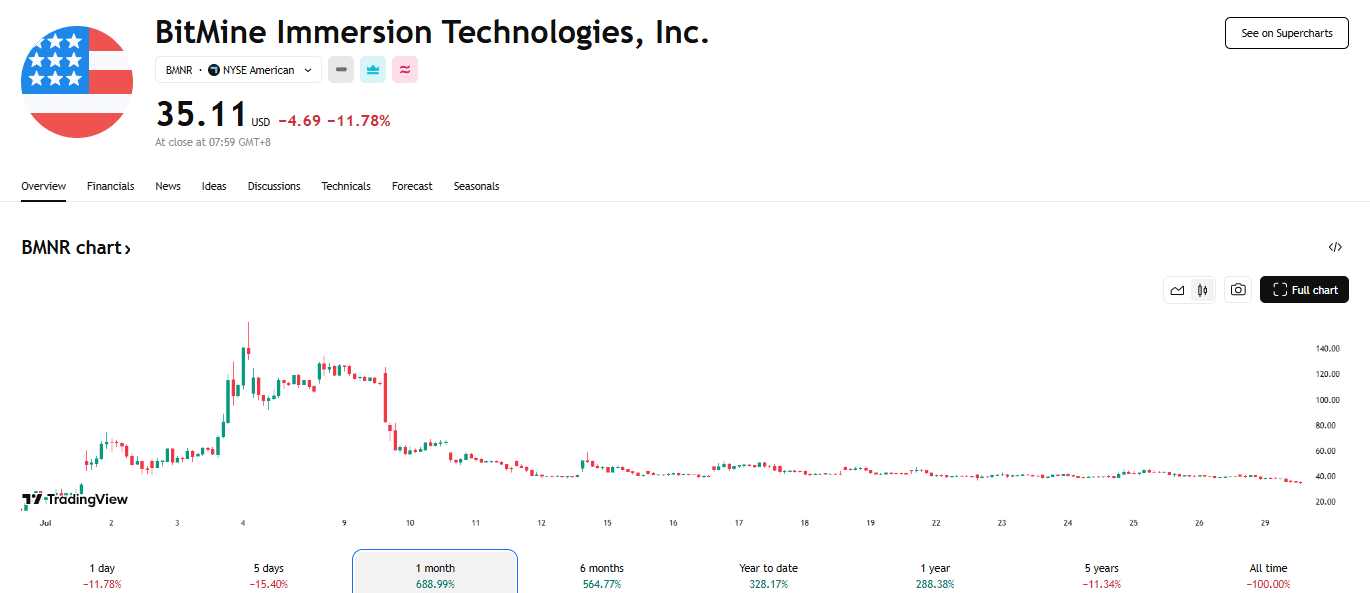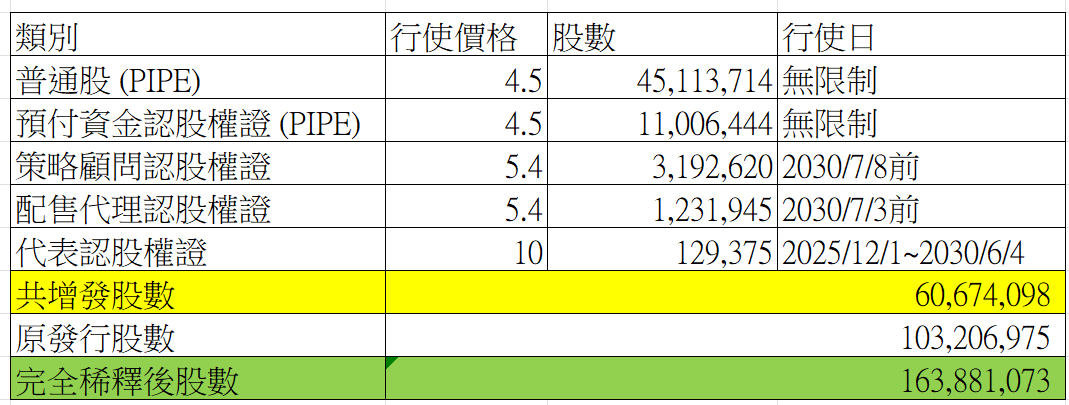
The Ethereum reserve company Bitmine (stock code BMNR) fell nearly 12% yesterday, and its filing revealed the costs and unlocking times of early investors, triggering panic selling. But is it really the case? This article will help you understand how the valuation of crypto reserve companies is calculated, and what the most misleading or difficult-to-obtain data is.

How low is the cost for initial investors?
This document reveals that BitMine has issued an additional 60,674,098 shares of common stock after transforming into an Ethereum reserve company (assuming full exercise), compared to its original issuance, resulting in a potential dilution of 58.8%.
Various types of original investors, including those who initially invested via cash and cryptocurrency in private placement agreements (PIPE), as well as strategic advisors, placement agents, and other related collaborators, can subscribe to BMNR shares at an ultra-low exercise price ranging from $4.5 to $10. Although BMNR fell nearly 12% yesterday, based on its closing price of 35.11, there is a potential increase of 2.5 to 6.8 times.
However, looking closely at the restrictions on their exercise dates, apart from a few representative warrants that will only be opened on 12/1, others have already been open for exercise or have expired from the beginning. It is estimated that most initial investors have converted to common stock, and the source of the selling pressure yesterday, in my opinion, was merely due to investors' panic emotions.

It is undeniable that these early investors, whether investing with cryptocurrency or cash, have really low costs. Chain News previously analyzed how Justin Sun's investment of 365 million TRX in TRON could yield a high profit of $3.8 billion. These 'treasury companies' have become an arbitrage outlet for crypto whales.
(Justin Sun's TRON rings the NASDAQ bell, TRX arbitrage reaches $3.8 billion)
How is the valuation of crypto reserve companies calculated?
The valuation of crypto reserve companies heavily relies on the following factors:
Amount of cryptocurrency purchased
Cryptocurrency price
Company stock price
Shares outstanding
The calculation formula for mNAV or NAV premium that I most commonly use is:
Market Cap (Stock Market Value) ÷ Cryptocurrency NAV (Value of Held Cryptocurrency)
= Stock Price ÷ (Amount of Cryptocurrency Held per Share × Coin Price)
= Stock Price ÷ [(Amount of Cryptocurrency Held ÷ Number of Shares) × Coin Price]
Note: The debt amount of convertible bonds or preferred stocks is ignored here.
Among the most difficult data to obtain is the number of shares issued by the company, as many crypto reserve companies raise funds through large and rapid issuance of new shares. However, the press releases do not necessarily disclose their shares outstanding or fully diluted shares, making assessment difficult. This is also why many crypto reserve companies see their stock prices soar initially, but once investors discover that their stock prices are severely overvalued, they will undergo significant valuation adjustments.
Is BitMine's valuation reasonable?
BitMine currently holds 566,766 Ether and 192 Bitcoin. According to Tom Lee's speech yesterday, the fully diluted equity is 117.6 million shares. If we disregard the value of its Bitcoin, the mNAV is 1.9.
(Tom Lee discusses the alchemy of Ethereum, BitMine drops 12% and valuation is recalibrated)
However, if we calculate based on the fully diluted equity of 163.88 million shares from this filing, the mNAV is 3.05.
Thus, the difference in fully diluted equity will greatly impact the company's valuation.
This article discusses whether early investors are offloading? Analyzing the BitMine case to understand the valuation calculation of crypto reserve companies, first appeared in Chain News ABMedia.



